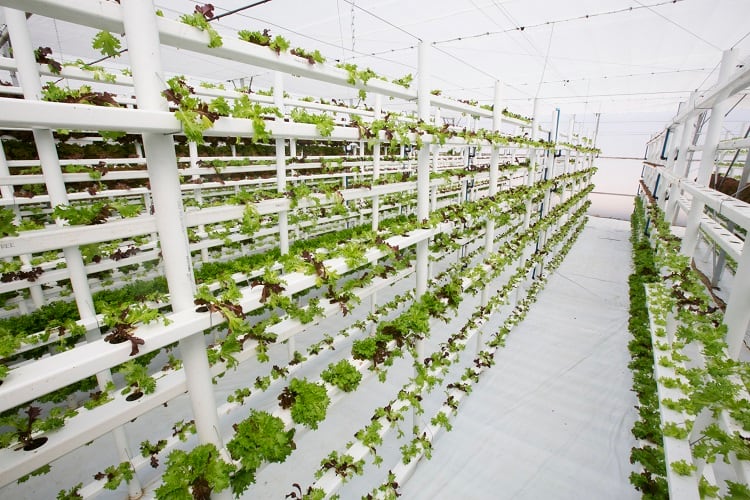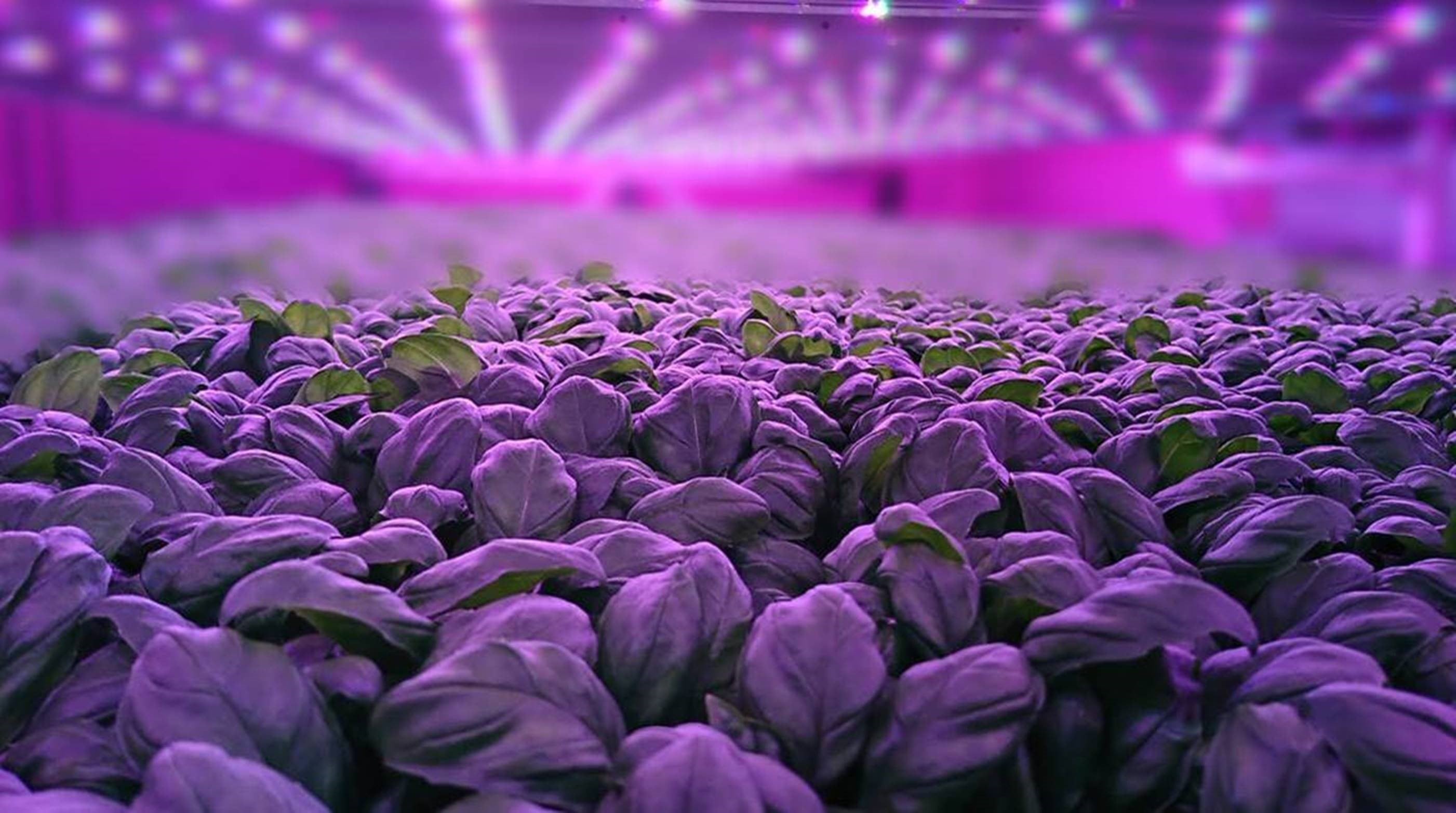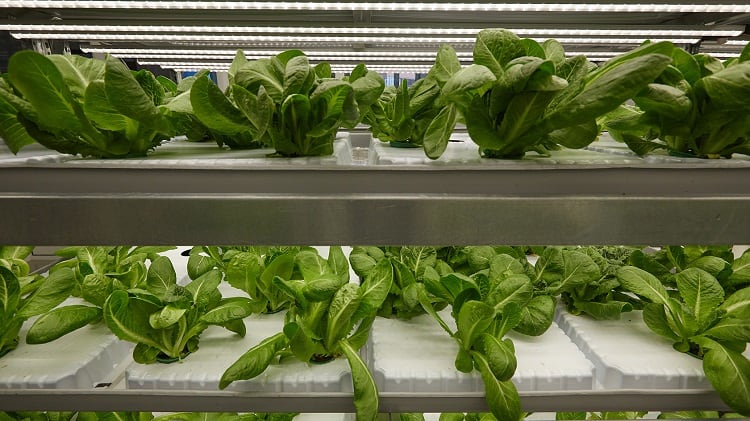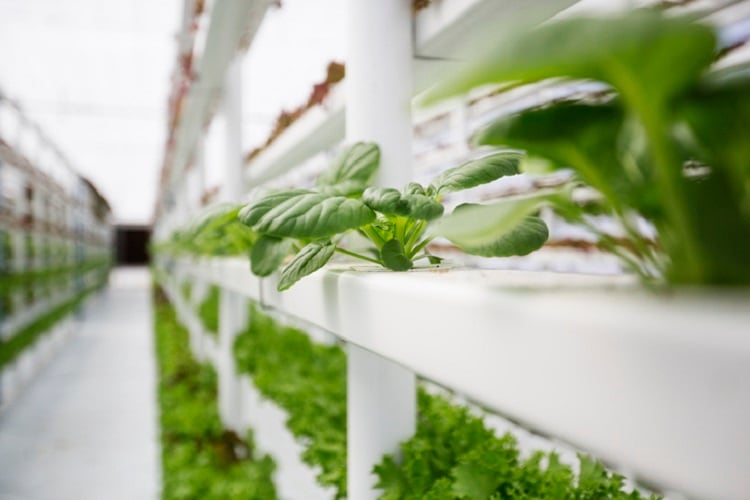It is estimated that by 2050, the world’s population will have risen from today’s 7.6 billion to 9.8 billion. Of these 9.8 billion, 67.2% are expected to live in urban areas.
In order to feed this growing, increasingly urbanised population, the United Nations estimates food production must increase by 70%.
Vertical farms or ‘plant factories’ – terms which describe vertically-stacked, fully controlled environments used to produce food – have the potential to help societies meet this elevated demand, without the need for additional farmland.
But are vertical farms a viable solution? Taking the amount of energy, water, and CO₂ required for production into consideration, do vertical farms make technical and financial sense?
Researchers from the Greenhouse Horticulture business unit of Wageningen University & Research (WUR) and the Department of Architectural Engineering and Technology of Delft University (TU Delft) in the Netherlands are working to provide an answer.
“We strive to quantify the resource requirement for the production of food in vertical farms, and to compare that to agricultural systems,” explained researcher Luuk Graamans.
Resources analysed include water, electricity, CO₂, land area, and financial input.
The team has developed a five-step methodology to calculate the feasibility of vertical farming, looking at how plants process energy in a closed cultivation system, how much energy is required to run vertical farms in varying locations, how energy consumption can be optimised, how vertical farms can be integrated into cities, and finally, at what expense.
Ultimately, these five steps can help stakeholders assess the technical and financial feasibility of food production in vertical farms.
“We are trying to determine whether vertical farming is feasible, both technically and financially, and whether it can and should be implemented in cities – or elsewhere. This can have great consequences for food supply, primarily to metropolitan areas,” said Graamans.
The ongoing study is expected to be completed by the end of 2019.
How do we know if vertical farms are even 'remotely efficient'?
Originally a building engineer, Graamans first became interested in urban farming while living and working in Hong Kong – a city that, with limited local production, depends greatly on food imports.

Approximately 90% of Hong Kong’s food is imported. According to its health and food bureau, 94% of fresh pork, all beef, 92% of vegetables and 66% of eggs are sourced from mainland China. Fresh fruit is predominantly imported from mainland China, the US, the Philippines and Thailand.
”I found myself wondering, what if something inhibits imports into this massive, dense city? Would it be possible to increase the resilience of this city by bringing food production closer?” he relayed.
Preliminary research into modern, closed cultivation systems quickly revealed a lack of technical and financial data, he continued. The existing body of research largely focused on the effects of various environmental factors on crop physiology but little focused on the engineering and expenditure of the production system itself.
It can be assumed that closed vertical farms could reduce the amount of water and CO₂ required when compared to the ‘traditional’ greenhouse. However, the combination of high-density crop production, limited volume and lack of natural ventilation are likely to induce a high demand for cooling and vapour removal – requiring additional energy.
This increased cooling/dehumidification leads to residual heat. ‘Can this residual energy be leveraged for other purposes, for instance, to heat surrounding urban environments?’ Graamans wondered. Could this offset some of the energy expenditure to reduce total costs?
“No one was really providing any accurate numbers on these aspects, yet I wanted to calculate the cost – to answer the question: Are vertical farms even remotely efficient?”
A five-step methodology
“The main goal of this research is to put an accurate figure on vertical farming,” Graamans told us. His team has developed a methodology comprising five steps:
1. How do plants process energy in a closed cultivation system?
Applying different levels of temperature, humidity and light to a plant will produce varying reactions. It is necessary to determine the relation between sensible and latent heat exchange, as well as the corresponding transpiration for the production of crops in closed systems. Transpiration is an important design parameter for the interior energy balance and consequently the climatisation of a vertical farm.
The developed model can be used to approximate the crop’s energy output and provide greater insight into the energy expenditure of closed systems. This can help determine the most efficient and effective way to extract heat from the system.
2. How much energy does a vertical farm require?
Next, the researchers calculate how much energy is required for production within the closed systems.
“We integrated the method we developed in the first step into a more comprehensive engineering model, in order to simulate, analyse and compare the energy required in plant factories with that required in greenhouses, across various locations.”
Simulated areas included northern Sweden – which has a cold climate and limited solar radiation during certain periods – and the Netherlands, which is known for its moderate climate and developed greenhouse industry. The team also applied the model to the high temperatures and solar radiation of Abu Dhabi.
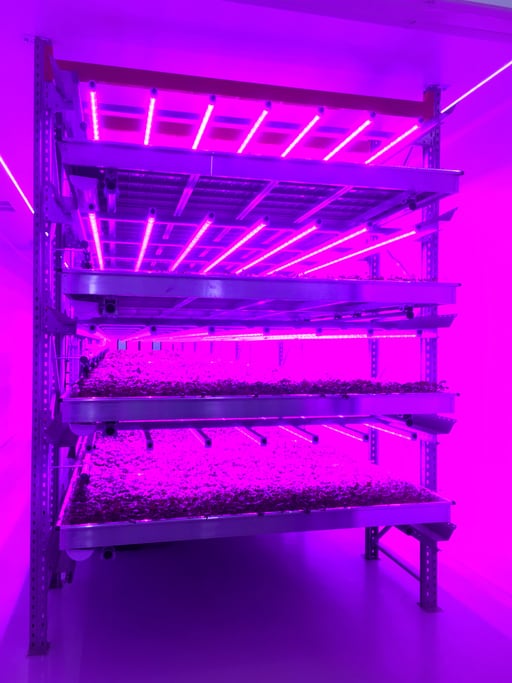
The thinking behind these three locations? “The relation between the costs (heating and cooling) and benefits (solar radiation) of greenhouse production largely depends on the latitude and external climate conditions of the location,” Graamans explained.
“It can be expected that at high latitudes solar radiation no longer offsets the energy being lost through the greenhouse cover. The opposite may occur at low latitudes, where the incoming solar energy cannot be discharged by natural ventilation and active cooling is required.”
The researchers calculated that vertical farms in the Netherlands required more than three times as much electricity as greenhouses for the production of the same crop. Yet, in the extreme climates of northern Sweden and Abu Dhabi, this difference in electricity requirements diminished in comparison – suggesting that plant factories may be the preferred indoor farming model in locations with extreme climates.
3. Optimising energy consumption
Graamans and his team also looked into minimising the energy required in the closed system – a step that required extensive analysis of the vertical farming facility itself. Design, materials, installation and structural dimensions could all contribute to lower energy consumption.
The location also plays a major role, Graamans told us, suggesting this is not always conveyed in media and marketing messages.
“Plant factories are often touted as a single, standard solution that you can simply drop in any location and immediately start producing.
“That approach is definitely sub-optimal. From both a construction and agricultural engineering perspective, vertical farms should always be optimised for its specific client, production requirements and local climate. Our research strives to investigate these aspects and formulate rules of thumb.”
The researchers conclude that land, CO₂, and water can be reduced when using the vertical farming model compared to the ‘traditional’ greenhouse. Additional design measures can be taken to significantly decrease energy consumption in comparison to standard vertical farms, exact figures for which Graamans plans to publish later this year.
4. Integrating the vertical farm into the city
This step quantifies whether residual energy from plant factories can be used to heat surrounding urban environments. “If we are adapting systems to be used in metropolitan centres, can we be re-using waste energy?” asked Graamans.
According to the researchers, appliances, machines or buildings that have a medium to low energy demand – such as housing – could benefit from this vertical farming side-stream.
“The goal is to minimise the total energy requirement and energy footprint of the city as a whole. Residual energy can be collected and applied to other urban functions. This process could integrate additional heat pumps in order to increase the temperature of the waste heat and consequently the number of its potential applications.”
5. Calculating the financial feasibility of urban vertical farming
“Once we have an overview of the best strategies for production, saving as much on resources as possible (step 1-4), we can determine how to lower operational costs,” explained Graamans.
The initial investment for closed cultivation systems – depending on production requirements and whether a pre-existing site is used or if a new build is required – presents little variation. However, operational costs and how these are related to exterior climates and location, can vary greatly.
By inputting this data, including location choice and exterior climate information, the researchers aim to offer a financial assessment of the system’s feasibility to more precisely inform a stakeholder’s business case.
Is vertical farming the ‘end-all’ solution?
Graamans said he hopes this research will help provide stakeholders running, investing in or designing vertical farms with “clearer focus”.
“An increasing number of vertical farms is popping up, and some have proven more successful than others.
“I hope that all stakeholders would benefit from this research.”
The study may also help open up opportunities for collaboration between members of the broader agricultural industry.
‘Traditional’ farming and vertical farming are often viewed as opposing concepts. However, Graamans suggested the sectors would benefit from collaborating with each other.
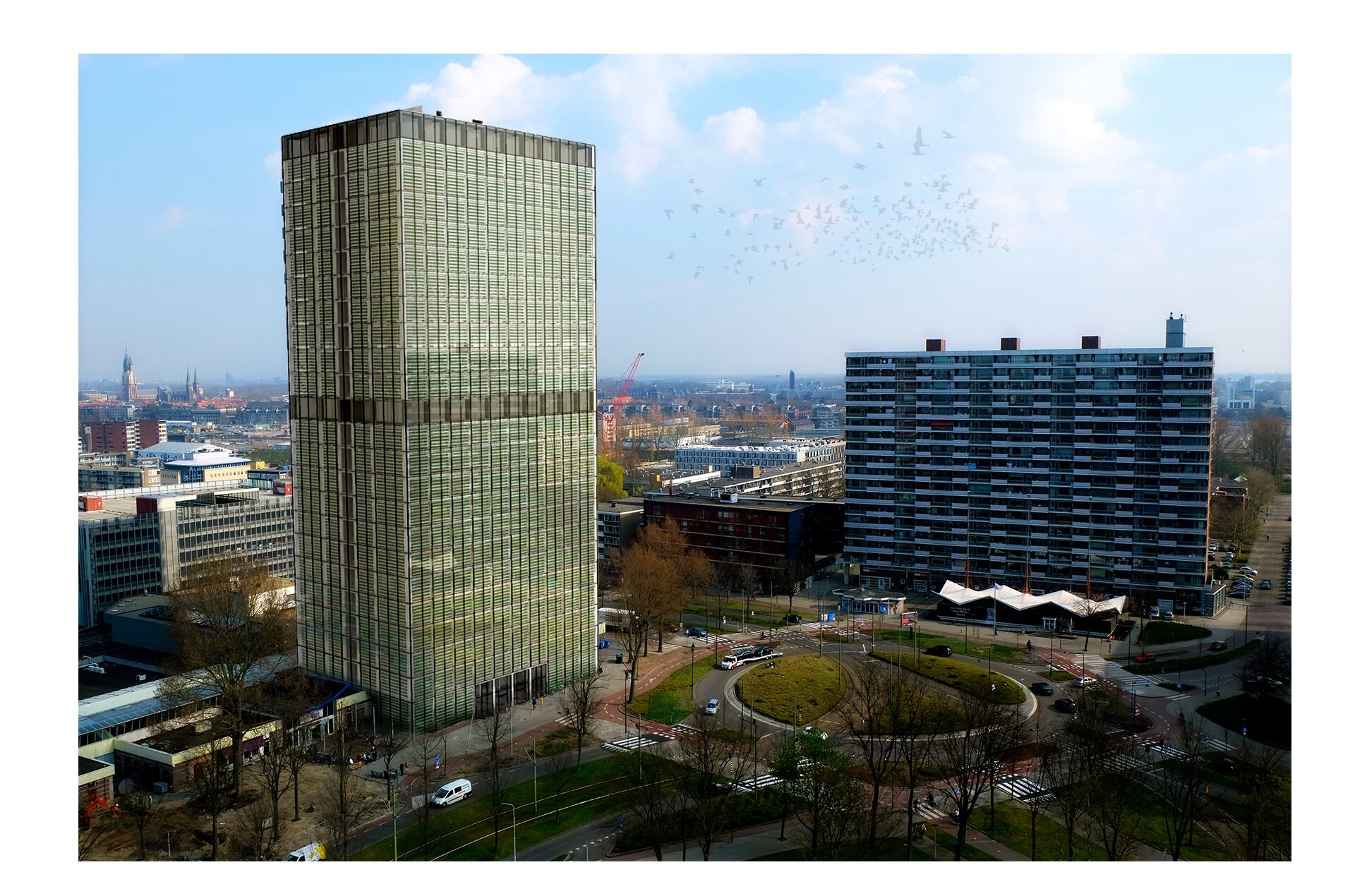
“Hybrid solutions are possible. This research could be very important for growers, who might have specific stages of crop production that could benefit from the completely closed, precise environment.
“We hope that there will be a shift in viewpoint. When people stop seeing vertical farming in opposition to the current agricultural system, but as a contributing factor.”
The million dollar question remains: Is vertical farming the solution to feeding more than 9 billion people by 2050?
“In my view, vertical farming can provide a new, additional element to food production.
“It won’t be the final solution to shift everything into the vertical farming model. That simply isn’t the most efficient way of food production,” responded Graamans.
“In order to truly tackle the food issues presented by the UN, for the development towards 2050, the solution will likely have to be a combination of open field production, greenhouse production around cities, and fresh food production in the city.”
He predicts food of high caloric content will be produced in areas surrounding cities, with fresh food cultivated and consumed within. “Vertical farming is key for minimising the required land area for production and precisely steering crop production.”


